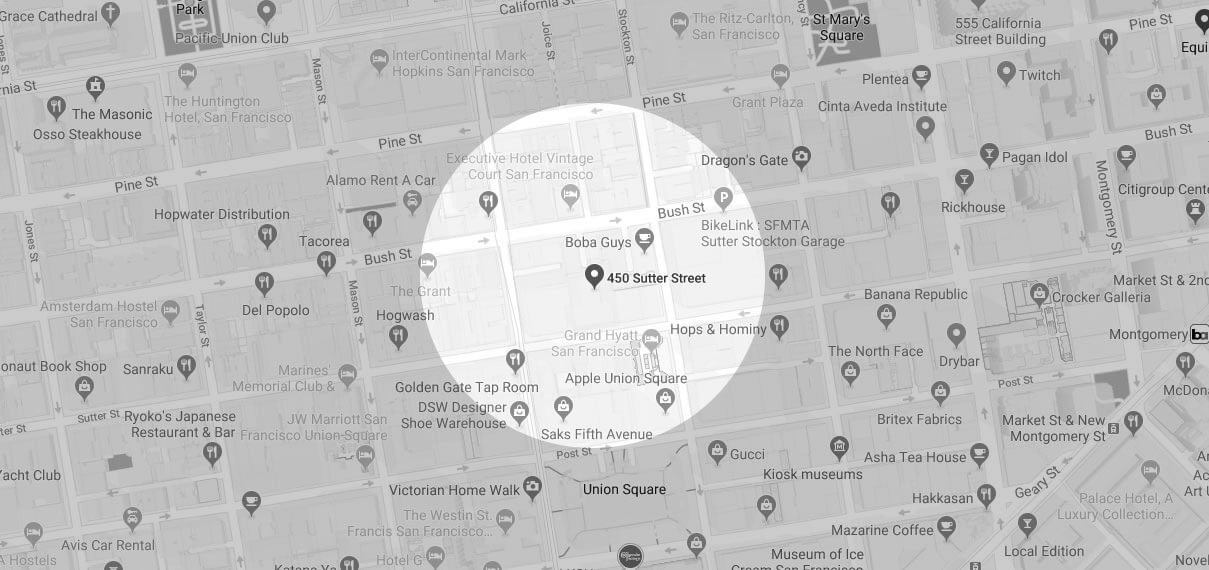Full Mouth Reconstruction Process
A full mouth reconstruction is a step-by-step process designed for patients with multiple dental and oral health issues. It is a combination of restorative and cosmetic procedures. At first, dentists take corrective measures for oral health concerns. After that, they proceed to cosmetic procedures. Nonetheless, a detailed and careful plan for each procedure step is drafted initially. It prepares each patient proactively for what comes next in their full mouth reconstruction journey.
What Does Full Mouth Reconstruction Work?
As the name suggests, full mouth reconstruction, also known as full mouth rehabilitation or full mouth restoration, is a way to restore the entire set of damaged or decayed teeth due to traumatic injury, old age, acid erosion or oral or congenital diseases. Full mouth reconstruction involves various cosmetic and restorative procedures. The treatment strategy primarily depends on the extent of the trauma and the patient's desired outcomes. It's essential to research a full mouth reconstruction before heading for it. It helps you and your dentist understand your desired outcomes and address them adequately. A full mouth reconstruction is typically suitable for people with the following issues:
- Stained or Yellow teeth
- Temporomandibular Joint Disorder (TMJ)
- Worn, cracked, or chipped teeth
- Missing teeth
- Neuromuscular disorders
- Crooked or misaligned teeth
Dentists perform several oral, neck or head scans to assess the current extent of the issue and requisite treatment. They typically consider the condition of teeth and gums before starting the procedure.
In case of any dental illness, dentists first perform restorative treatments before starting cosmetic procedures. Generally, the following procedures are included in a full mouth restoration:
- Dental veneers
- Dental implants
- Dental bridges
- Teeth whitening
- Root canal therapy
- Neuromuscular surgery
- Gum contouring
- Dental crowns
- Dentures
- Inlays and Onlays
- Clear aligners
Visiting your dentist after the treatment for follow-ups and maintaining good oral hygiene is the least you can do to ascertain long-lasting results.
What Are The Steps of Full Mouth Reconstruction
Intro Paragraph (100 words) A full mouth reconstruction is a way to rehabilitate how one's mouth looks. It is a combination of cosmetic and restorative dental procedures. Complete dental rehabilitation requires your dentist to design a roadmap and a pathway that could help derive predictable results. Having a clear vision of the outcomes and knowing how to achieve the milestones successfully is paramount to the long-term success of a full mouth reconstruction. For the sake of convenience and understanding, the entire procedure is broken down into phases and steps. Though a few steps can be omitted if needed.
Getting started/consultation
The first step of full-mouth reconstruction is prearranging a consultation visit with your dentist. During the consultation, the dentist and the patient talk through the primary concerns and the treatment goals. The dentist questions the patient about their medical and oral health record, current medications, and lifestyle choices. The dentist weighs up the extent of the problem through the mouth, head, and neck scans.
Records and impressions
Paragraph (50 words) Besides visual examination, the dentist takes impressions of the invisible areas of the oral cavity through intraoral images and scans, pictures of teeth and face and X-ray scans. Apart from accessing the invisible areas of the mouth, these images and impressions serve as a reference to compare the results after the treatment completion.
Designing the smile
In this phase, the dentist creates a layout of the current and expected position of teeth. Thankfully, with the intervention of digital technology in dentistry, dentists can design a 3D model of dental restorations and prosthetics. Patients can test the mock-up restorations to assess how they would look. It is a crucial step of the process, as it helps dentists get feedback about adjusting the final outcomes.
Creating the treatment plan
Based on the results of the visual examination, records, impressions, and models, the dentist will demonstrate a suitable combination of cosmetic and restorative dental procedures to help the patient achieve the desired results and a complete set of healthy teeth. The treatments could include any of the following:
- Orthodontic treatment
- Corrective jaw surgery
- Root canal therapy
- Placement of dental crowns, porcelain veneers, or dental implants
- Removal of damaged teeth
- TMJ treatment
- Periodontal treatment
- Placement of implant-supported dentures
The Treatment
Paragraph (50 words) There are several stages of a full mouth reconstruction requiring several office appointments. The treatments may span over several months due to some lengthy dental procedures and the cost. A few procedures, such as dental implant placement, require some downtime before placing the final restoration. During the full mouth reconstruction, the dentist will likely work with a dental lab to design restorations.
Post-treatment Evaluation
A month or two after the treatment, a follow-up appointment with the patient is arranged with the sole purpose of evaluating their appearance and perception of the final results. The patients express their perception of self-image, their confidence, and how people assess them after the treatment.
Based on the findings of post-treatment evaluations, it is reported that a well-executed full mouth reconstruction dramatically changes the patient's physical and psychological well-being. Socially introverted patients tend to initiate social interactions with an improved feeling of well-being.
Risks and Concerns of Full Mouth Reconstruction Process
Every procedure comes with a few potential risks, and so does a full mouth reconstruction. Since a full mouth reconstruction is a complex treatment involving multiple procedures, it involves risks associated with each procedure, all in one. Outlined below are the potential concerns and risks associated with a full mouth reconstruction:
Concerns
Following is the list of things that you must check with the dentist:
- Ask your dentist about the type of anesthesia, local or IV sedation. Also, discuss the factors that might influence the choice.
- If you are highly anxious about the procedure, it might be necessary to administer general anesthesia.
- Always discuss the recovery time and the number of days you need to take off from work beforehand with your dentist.
- Always prearrange someone to take you to or from the surgery. It's not advisable to drive within 24-48 hours after a surgical treatment because sometimes the effect of anesthesia stays longer.
- Arrange someone who can stay with you for a couple of days following the full mouth reconstruction.
- Getting instructions from the dentist after the treatment is the wrong approach. Get detailed instructions from your dental surgeon before the treatment for effective planning.
Risks
Some of the risks of full mouth reconstruction are:
Breakage
Full mouth reconstruction doesn't mean you are done with dental care for the rest of your life. Dental restorations need as much care as natural teeth. Dental implants, crowns, veneers, and dentures can break without adequate care. Maintain proper oral care and hygiene to avoid such risks. Wear your night guard as suggested by your dentist.
Tooth sensitivity
Teeth undergoing full mouth reconstruction have a higher risk of tooth sensitivity to hot and cold temperatures. Usually this is a temporary effect and should resolve by time.
Tooth decay and gum disease
Patients undergoing full mouth reconstruction are still prone to gum disease and tooth decay. It holds true if a dental crown or artificial tooth becomes wiggly, allowing bacteria to invade the gum line. In that case, root canal therapy is a suitable option. If you experience a loose crown, see our expert dentists at My Dentist San Francisco as soon as possible.
TMJ problems
If your bite doesn't feel right, it might result in an imbalanced bite. It can lead to temporomandibular joint disorders and grinding of teeth.
Allergic reactions
The patient might be allergic to the material used in dental restorations. However, it happens very infrequently.
What to Expect Before and After The Procedure
Full mouth reconstruction is a treatment plan tailored to the patient's unique needs and involves a series of procedures that treat different dental concerns. The type and number of procedures needed depend on the condition of the patient's teeth, gums, and jaws.
Full mouth reconstruction requires time, energy, and money investment. So, it's sensible to learn all you can about full mouth reconstruction before taking the leap.
Before Full Mouth Reconstruction Procedure Process
Each procedure of full mouth reconstruction has its own requirements in terms of preparation. Sometimes, the patient may need to start or stop certain medications before the procedure. The patient may also need to prepare for downtime with childcare arrangements, getting off with chores and daily errands, etc.
After Full Mouth Reconstruction Procedure Process
Paragraph (50 words) Due to the uniqueness of the procedure and the treatment plan, the recovery period and circumstances vary from patient to patient. However, there are a few things every patient can expect after a full mouth reconstruction. For example, rest, pain management, diet modification, and adequate oral hygiene are typically advised to all patients to avoid postoperative complications.
Additional Information About Full Mouth Reconstruction Process
Many patients nowadays have a common complaint, "I don't like my smile. What can I do? Are there any going back?"
Full mouth reconstruction is a combination of extensive surgical and non-surgical procedures involving time, money, and emotional preparedness. Once you undergo the procedure, there is no going back. Communication before the procedure is the key to eradicating such complaints and achieving goals. There are several ways to establish effective communication between the dentist and the patient — verbal communication, before and after photos of similar cases, YouTube tutorials, and patient education software such as Casey®, My Dental Hub®, and ConsultPro®, to name a few. However, the most successful and effective way to achieve ideal results is an intra-oral 3D mockup.
The steps followed by a full mouth reconstruction process are more or less the same as a smile makeover. But a full mouth reconstruction procedure is not the same as a smile makeover. A smile makeover focuses primarily on cosmetic procedures; however, oral health and functionality are also given meaningful attention. On the other hand, a full mouth reconstruction aims to correct the dental health issues resulting from a traumatic injury, age, or congenital or oral disease - an FMR prioritizes restoring the lost oral health. The final result of a full mouth reconstruction is improved functionality, with a beautiful smile being the perk of the procedure
Conclusion
Full mouth reconstruction is a massive undertaking in a patient's life. The success of a full mouth reconstruction starts with patient education. After that, it becomes a trilogy of the patient's concerns and risk factors, the dentist's technical skills, the treatment approach, and the chosen biomaterials. The dentist's confidence and capability are based on their commitment to continuing education. At the same time, patients' confidence is predicated on how efficiently and frequently they can voice their concerns and goals to the dental healthcare provider. Our dentists are constantly taking CE courses to stay on top of changes in the way of treatment and biomaterials.
Holding on tight to the post-procedural guidelines is very important to maintain the results of the nerve-racking treatment. Attending scheduled appointments, including follow-up visits, is important to communicate your post-procedural concerns to the dentist. It also helps the dentist weigh in on your recovery progress and health status and foresee any future complications. All these factors combine to make a solid foundation for long-lasting oral well-being.
About My Dentist San Francisco
My Dentist San Francisco is a premier dental clinic in San Francisco, CA, United States. We offer a wide range of dentistry services maintaining the highest standard. Our world-class dentists and hygienists provide state-of-the-art dental care, from preventive care to advanced restorative treatment and cosmetic smile makeovers.
My Dentist San Francisco is the number one dental brand with the largest footfall for full mouth reconstructions in San Francisco. We provide an atmosphere that promotes care and compassion along with confidentiality.
Alleviating the anxieties associated with dental care through effective communication and education is our top-most priority. Your overall health, along with your oral health, is one of our primary concerns. We give each patient our undivided and unparalleled attention to delivering a personalized solution.
Book Your Appointment!



